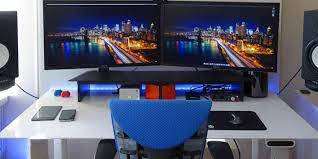How to choose the best screen and use it to increase your business productivity?
In our technology-driven society, it's no surprise that people are using screens for work and business purposes more than ever before.
But with so many different types of screens on the market, how do you know which one is right for you?
In this blog post, we'll discuss some things to keep in mind when choosing a screen for work, as well as some tips on how to get the most out of your screen time. Stay tuned!
When it comes to choosing a screen for work, the most important thing to keep in mind is what you'll be using the screen for.
Are you going to be working on a computer? If so, you'll need a monitor that's big enough to see your work, but not so big that it's cumbersome.
If you're going to be giving presentations or working with multimedia, you'll need a screen that's large enough to be seen by everyone in the room.
And if you're going to be doing a lot of reading or writing, you'll want a screen with a high resolution so that you can see everything clearly.
Once you know what you'll be using the screen for, you can start narrowing down your options.
There are a few other things to keep in mind when choosing a screen for work, like the type of interface you need and the features that would be most useful to you.
For example, some screens come with built-in speakers, while others have special coatings that reduce glare.
Think about what would make your work easier and look for screens that offer those features.
Once you've found a few options that seem promising, it's time to take them for a test drive.
If possible, set up the screens in the way you would use them at work and see how they feel.
Pay attention to things like the resolution, the size, and the weight of the screen.
Also, think about how easy it is to use the controls and whether or not the screen comes with all the cables and adapters you need.
Once you've found a screen that you're happy with, it's time to start using it to increase your productivity.
Here are a few tips:
- Use multiple monitors: If you often find yourself flipping between windows or tabs, consider investing in a second monitor. This will allow you to have more than one window open at a time, so you can work on multiple tasks simultaneously.
- Take advantage of features: If your screen has special features like built-in speakers or a glare-reducing coating, make sure to use them!
- Adjust the settings: Spend some time tweaking the brightness, contrast, and color settings on your screen until you find a combination that's comfortable for you.
- Take breaks: It's important to rest your eyes every now and then, so be sure to take breaks every 20 minutes or so.
With the advent of new technology, it is now possible to link different screens together to create a large display. This guide will help you increase productivity by choosing the best screen for your business needs.
The first step is to determine what type of information you want to display on the screen. For example, if you want to display graphics, you will need a high-resolution screen. If you want to display text, a lower-resolution screen will suffice.
Once you know what type of information you want to display, you can choose the best screen for your needs. For example, if you need to display high-resolution graphics, you should choose a liquid crystal display (LCD) screen. If you only need to display text, a cathode ray tube (CRT) screen will suffice.
The next step is to determine the size of the screen you need. For example, if you only need to display a small amount of information, a 17-inch screen will suffice. If you need to display a large amount of information, a 21-inch or larger screen will be necessary.
Finally, you need to decide how you will connect the screen to your computer. The most common connection is through a VGA port. However, newer computers may have DVI or HDMI ports. If your computer does not have one of these ports, you can purchase an adapter that will allow you to use a VGA port.
Now that you know how to choose the best screen for your business needs, you can increase productivity by using multiple screens. By displaying different types of information on different screens, you can quickly and easily find the information you need. In addition, by connecting multiple screens together, you can create a large display that will allow you to see more information at one time.




Comments
Post a Comment